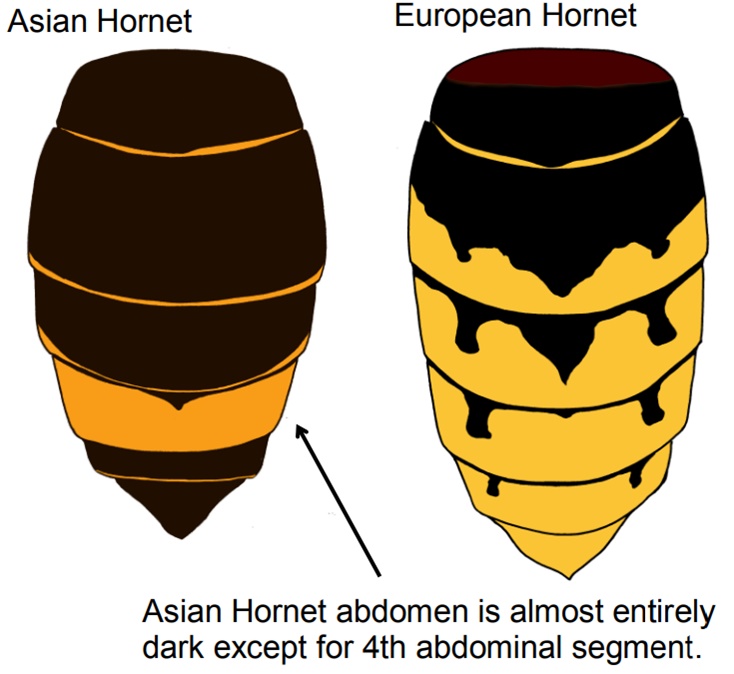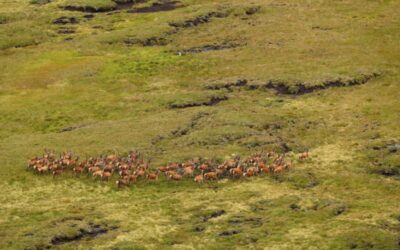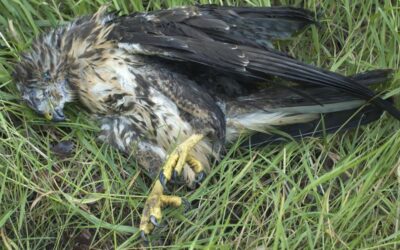INVASIVE SPECIES
Elliott Rose-King and Martin Rose-King, Bounty Consultancy Services, provide an update on the status of invasive Asian hornets in the UK.

The summer has continued to be quiet in the UK, with no further confirmed Asian hornet sightings or suspect reports in our area.
Hopefully this means we have continued to identify any Asian hornets in the UK so far and that none have established!
But we should continue to monitor and remain vigilant, as it is entirely possible that undetected nests are still present (especially due to lower awareness levels in the UK).
At this time of year Asian hornets will, most likely, have built a secondary nest. Guernsey found and treated their first secondary nest of the year in mid-August, while Jersey have found upwards of 40 (at the time of writing).
As mentioned last month, research from France (by Villemant et al. in 2011) has shown that 37% of an Asian hornet’s diet can consist of honeybees in rural areas, and 66% in urban areas!
This is especially relevant now that nests are more developed, as more recent research from France (Rome et al. in 2021) has shown that a developed Asian hornet colony can predate up to 40% of honeybees from a single hive.
So, it’s particularly important to continue monitoring to ensure no workers are foraging in your area.
Monitoring in the autumn
As previously mentioned, Guernsey has shown that, at this time of year, it is more effective to monitor by spending 10-15 minutes (around midday) watching insects coming and going from your beehives.
As nests are likely to be developed at this time of year, if Asian hornets are foraging in your area, you will probably see them visiting and ‘hawking’ by your beehives.
This is a more effective way of monitoring at this time of year than using a monitoring trap and has the added benefit of not trapping important non-target insects (that would have to be released each day).
Again, it is very important to note that leading research (from France, Spain, Italy, and the Channel Islands) has shown that using continuous trapping as a control method, is also (unfortunately) not effective and cannot control an Asian hornet nest.
Continuous kill trapping will also have a negative impact on other important insects and often has a more harmful effect on your own bees – so it’s important to avoid doing this.
If you are still using a monitoring trap at this time, you are likely to find increasing numbers of pollinators in your trap. It is important you modify it and check it every day to release any pollinators that are still trapped! This far into the year it is highly recommended that you monitor by watching your beehives (or a wicking jar) for 10-15 minutes around midday every day, instead of using a trap.
Asian Hornet Awareness Week
Asian Hornet Awareness Week is 5 – 11 September. This is the perfect time to think about spreading awareness of Asian hornets, to other beekeepers and the general public, in time for the late season and next year.
More information is available on the BBKA website.
Identification Information
As always, if you think you’ve spotted an Asian hornet or have one in a trap, you can identify it from its dark abdomen, or other distinguishing features seen in the diagrams [below].
If you are monitoring by watching your beehives or a wicking jar, the dark abdomen of the Asian hornet can be very distinctive and still easy to spot.

If you find a queen or think you’ve spotted a worker
If you think you have positively identified a hornet, or think you have one in a monitoring trap (do not release it), you should report it using the ‘Asian Hornet Watch’ app (available on android or iOS phones).
You can more information on the BBKA website:
bbka.org.uk/asian-hornet-resources
If you haven’t downloaded the app, then send your photos and videos to the Non-Native Species Secretariat (NNSS).
References
Budge, G. E., Hodgetts, J., Jones, E. P., Ostojá-Starzewski, J. C., Hall, J., Tomkies, V., Semmence, N., Brown, M., Wakefield, M. & Stainton, K. (2017). The invasion, provenance and diversity of Vespa velutina Lepeletier (Hymenoptera: Vespidae) in Great Britain. PLOS ONE, 12(9), e0185172.
Rome, Q., Perrard, A., Muller, F., Fontaine, C., Quilès, A., Zuccon, D. & Villemant, C. (2021). Not just honeybees: predatory habits of Vespa velutina (Hymenoptera: Vespidae) in France. Annales de la Société entomologique de France (N.S.), 57(1), 1-11.
Villemant, C., Muller, F., Haubois, S., Perrard, A., Darrouzet, E. & Rome, Q. (2011). Bilan des travaux (MNHN et IRBI) sur l’invasion en France de Vespa velutina, le frelon asiatique prédateur d’abeilles. In: Barbançon, J.-M. & L’Hostis, M. (eds.) Journée Scientifique Apicole JSA, Arles. ONIRIS-FNOSAD, Nantes. [in French]



0 Comments